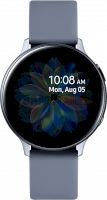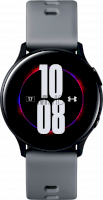Samsung unveiled the new Galaxy Book series laptops yesterday at its Unpacked event. The company has been calling the laptops its “most powerful Galaxy” devices so far. It now envisions the laptop as an integral part of the Galaxy ecosystem.
The new models include the Galaxy Book, Galaxy Book Pro, Galaxy Book Pro 360 and the Galaxy Book Odyssey. This wide variety of notebooks aims to offer something for everyone. The entry-level models are affordable yet versatile.
The Galaxy Book Pro is thin and light with powerful specs while the Pro 360 has an incredible hinge as well as the S Pen. The Odyssey features top-tier specs and happens to be the world’s first laptop with NVIDIA’s RTX 3050 Ti GPU.
As this lineup represents a fundamental shift in Samsung’s approach to laptops, we wanted to find out more about the vision behind it. Who better to unpack the new Galaxy Book series with than Dr. Hark-sang Kim. He is the Corporate Executive Vice President at Samsung Electronics and leads the New Computing R&D team at the Mobile division. Dr. Kim led the development project for the Galaxy Book series.
SamMobile: How do you assess the global laptop market post-pandemic and will Samsung now be making a more concerted effort to compete in it?
Hark-sang Kim: As global demand for PCs grows, we’re listening closely to consumers and designing devices around their ever-evolving needs and expectations. Despite an intense increase in PC demand during 2020 and 2021, we still believe demand will be high moving forward due to consumers wanting these connected and seamless experiences.
With the Galaxy Book Pro and Galaxy Book Pro 360, Samsung is meeting this demand with a new
generation of PCs that combine the power of a laptop with the mobile DNA of a Galaxy smartphone.
The Galaxy Book Pro series offers improved solutions in post-pandemic usage such as video
conferencing and virtual lectures. With Studio mode, you can enjoy video call environments that
help you look as you prefer regardless of your setting. Combined with Intelligent Noise Cancelling, which eliminates ambient noise from your microphone, you’ll be seen and heard with clarity.
With Screen Recorder and Samsung Studio Plus, you can also make the next viral gameplay tutorial by recording your screen in combination with your voice and polish your video with easy editing tools.
Consumers also prioritize full ecosystem connectivity perfect for a more mobile world. Link to
Windows (Microsoft Your Phone) provides seamless cross-device operation between the Galaxy
Book Pro series and Galaxy smartphones. Easy Bluetooth Connection effortlessly manages Galaxy
Buds connections between devices. These types of connected experiences on the PC are now more important than ever, and we will continue to build Galaxy Books that complete the Galaxy ecosystem for our users.
SM: Does Samsung’s research show that existing Galaxy device owners would consider switching to a Samsung laptop if it enabled them to get more out of the ecosystem?
HSK: As consumers add more devices to their home and office spaces, we learned that they want them to work together seamlessly so there’s no time wasted trying to find a note, transfer files, or connect to audio. In designing the Galaxy Book series, we looked across our entire mobile portfolio—from earbuds and IoT devices to tablets and smartphones—in search of ways for your devices to work together to help you do more.
Now with Galaxy Book Pro series, users can instantly sync photos and files with their smartphone
or enjoy their favorite Galaxy apps on PC via Link to Windows (Microsoft Your Phone). Users can also enjoy one unified Samsung Notes experience—with PDF annotation, voice recording, and auto-syncing—across smartphone, tablet, and PC. We’ve also developed new ways for different devices to support one another.
With Easy Bluetooth connection, the Galaxy earbuds automatically toggle between the PC, tablet, and smartphone as you switch tasks. Second screen allows users to expand your PC workspace onto their tablet. SmartThings Dashboard simplifies their smart home, allowing them to dim the lights, change the temperature, and set oven to preheat all from one central hub.
SM: How were the sizes determined? Were 14-inch and 16-inch also considered instead of the 13.3- inch and 15.6-inch sizes?
HSK: We’re constantly listening to consumers and launching products that best meet market needs. According to IDC data, 13-14-inch and 15-16-inch devices are the most in-demand PC sizes on the market. Determined to fulfill this need, we chose sizes at 13-inch and 15-inch. The 13-inch models are for those who prioritize mobility first and foremost, and 15-inch models are for those who want to balance mobility with a larger screen experience.
SM: What is the external graphics processor (GPU) which would only be available for the 15.6-inch Galaxy Book Pro?
HSK: The external graphics processor (GPU) in the 15.6-inch Galaxy Book Pro is NVIDIA® GeForce® MX450. We decided to offer an external graphics processor to the 15.6-inch
Galaxy Book Pro to provide a more optimized experience for consumer who expect to use their
PC for this type of work.
SM: What is the difference between the Galaxy Book Pro 360 Super AMOLED and Galaxy Book Pro AMOLED screen?
HSK: For the first time ever, we built Galaxy Book Pro series with AMOLED displays, meaning users now have access to incredibly accurate colors, richer contrasts and more depth across their entire Galaxy ecosystem from their smartphones, tablets, wearables and now PCs.
Galaxy Book Pro and Pro 360 uses an AMOLED display that’s perfect for daily use and after work
entertainment thanks to the SGS Eye Care-certified displays. It also comes with the Intelligent
Color Engine which can automatically adapt the display’s color space depending on the on-
screen content.
In addition to those features, Galaxy Book Pro 360 uses a Super AMOLED display, which enables
touch and S Pen input. This makes it ideal for creative users, from artists looking for real-world brush effects to graphic designers who need pinpoint accuracy.
SM: How many nits is the peak brightness of the laptop and wouldn’t QLED be better, which was used in the past laptop line-up? If so, why was OLED chosen and not QLED again this time?
HSK: The Galaxy Book Pro series is packed with innovations and development knowledge that Samsung has accrued over the years building the mobile devices. Generally, consumers use PCs primarily indoors so we naturally optimized the Galaxy Book series’ brightness for indoor usage.
Among many considerations when developing the new Galaxy Book Pro series, one of the most
important consideration for our target users was mobility- how thin and light the device can be.
Even if the performance is top of the line, if it’s too thick or heavy, it starts to become a trade-off and can disrupt mobility. To balance these considerations, we chose AMOLED technology which has competitiveness for thin and light, for the Galaxy Book Pro series, the same technology found on other Galaxy devices such as smartphones.
Secondly it is crucial to provide users with the most accurate and optimized displays possible.
This led to the development of the Intelligent Color Engine, which can switch color spaces. The
reason this is important is because different tasks require different color fields. For example,
videos are more vivid in DCI-P3, photo editing typically requires Adobe RGB and general usage
relies on the all-round sRGB. The Galaxy Book Pro series’ displays can switch between these
seamlessly, ensuring all content is optimized.
Finally, the display should be comfortable and consistent. Users who work all day on their
devices should not feel strained or lose concentration due to their display. The Galaxy Book Pro
and Pro 360’s AMOLED displays SGS Eye Care-certified. They transmit less blue light, and they are more comfortable to look at. In addition, by providing the exact same color range as the Galaxy smartphones do, photos and design works can be seen exactly the same between devices for
accuracy.
SM: With this significant revamp, has Samsung reconsidered its position on offering laptops and notebooks in limited markets only?
HSK: In 2020, PCs became permanently woven into everyday life. They helped us connect to the wider world, work remotely, video conference with friends and family, and find outlets for creativity and relaxation. In turn, we’ve seen consumer expectations rise. Our mobile-first users want their devices to deliver seamless communication, sustained productivity, and immersive entertainment—all in one.
In 2021, we’re expanding the Galaxy ecosystem with the new Galaxy Book series. With the
growing marketing needs, we are moving into more markets this time and constantly evaluating
new growth. We aim to provide consumers with a new mobile computing experience powered
by innovations spanning across the Galaxy ecosystem as we establish Samsung’s leadership and
long-term commitment to the PC market.
The post Unpacking the new Galaxy Book series with Samsung’s HS Kim [Interview] appeared first on SamMobile.
Read More.........




















































